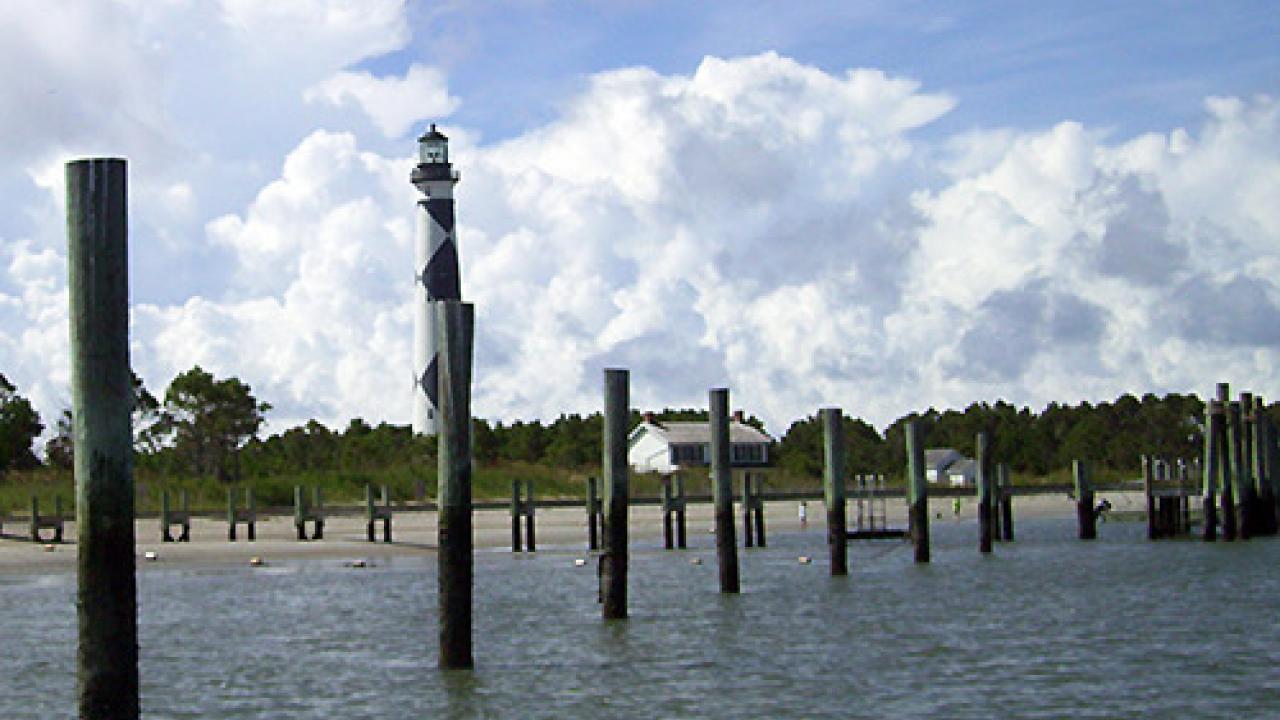
Ocean Acidification Threatens Coastal Communities
Nationwide assessment reveals communities in 15 states vulnerable to economic risk.
The first nationwide vulnerability assessment for ocean acidification, published today in Nature Climate Change, shows that coastal communities in 15 states that depend on the nation’s approximately $1 billion shelled-mollusk (e.g., oysters and clams) industry are at long-term economic risk from ocean acidification.
The assessment illustrates that vulnerable communities are not confined to the Pacific Northwest, which has been the primary focal point of attention and resources. Newly identified communities at risk reside everywhere from Maine to the Chesapeake Bay to the Louisiana bayou.
While Northern California has strong economic dependency on shellfish and is highly exposed to ocean acidification, it was not a large focus of the report. In part, this is because the researchers found it was less vulnerable than other coastal regions in the United States due to the state’s early efforts to address ocean acidification and climate change. Lack of economic data also made assessing the impact to California and other West Coast regions more difficult.
“Ocean acidification has already cost the oyster industry in the Pacific Northwest nearly $110 million and jeopardized about 3,200 jobs,” said Julia Ekstrom, who was lead author of the research while a scientist with Natural Resources Defense Council and now is director of the climate adaptation program at the UC Davis Policy Institute for Energy, Environment and the Economy. “Our research shows, for the first time, that many communities around the U.S. face similar risks.”
Ocean acidification is the result of oceans absorbing the growing amounts of carbon dioxide produced by burning fossil fuels. Acidifying waters make it more difficult for creatures with calcium carbonate shells or skeletons, including mollusks, crabs, and corals, to grow shells and survive. Mollusks are known to be particularly sensitive to ocean acidification and are also among the most lucrative and sustainable fisheries in the United States.
Marine life, human livelihood
The study, co-authored by scientists at the NRDC, UC Davis, Ocean Conservancy, Duke University and collaborators from nine additional institutions, integrated physical, economic and social data into an assessment of various regions’ overall vulnerability to ocean acidification. The risk factors for impacts are numerous:
- Physically, local factors, such as local nutrient pollution from agricultural runoff, can amplify the global phenomenon acidification.
- Economically, industry factors, such as total revenues, can influence the importance of shellfish to a community.
- Social factors, such as the diversity of local employment, decrease communities’ capacity to cope with change.
“Our analysis shows acidification will harm more than ocean creatures; it will have real impacts on people’s lives,” said Lisa Suatoni, NRDC Oceans Program senior scientist. “It will pinch pocketbooks, it will put livelihoods at risk, and it will alter the fabric of communities all across the country.”
Hot zones of vulnerability
The study found different regions face varying combinations of risk factors, making them unique “hot zones” on the map.
Examples include:
- New England hot zones: The productive ports of Downeast Maine and southern Massachusetts, where poorly buffered rivers run into cold New England waters, which are especially enriched in “acidifying” carbon dioxide.
- Mid-Atlantic hot zones: East Coast estuaries like Narragansett Bay, Chesapeake Bay, Albemarle-Pamlico Sound in North Carolina, and the Long Island Sound, where an abundance of nitrogen pollution exacerbates ocean acidification in shellfish-rich areas.
- Gulf of Mexico hot zones: Terrebonne and Plaquemines Parishes of Louisiana — and other communities in the Gulf of Mexico — where the shelled-mollusk industry is limited to oysters, giving this region fewer options for alternative, potentially more resilient, mollusk fisheries in the short term.
- Pacific Northwest hot zones: The Oregon and Washington coasts and estuaries, where a potent combination of risk factors converge, including cold waters, upwelling currents that bring corrosive waters closer to the surface, corrosive rivers, and nutrient pollution from land runoff.
Of particular concern are the study’s findings that many of the most economically dependent regions are currently the least prepared to respond. States such as Massachusetts, New Jersey, Virginia, and Louisiana have minimal research and monitoring for ocean acidification and little government support at federal or state levels to reduce their risk.
Since this assessment focused on mollusks, it offers one slice of overall vulnerability within the ecosystem. The method of analysis in this study should also be applied to a broader set of at-risk species, such as crabs and coral, and the services they provide.
‘Plenty we can do’
While reducing global carbon emissions is the ultimate solution, study findings point to localized solutions that can be implemented, including:
- Reducing local pollutants, such as agricultural runoff in the Chesapeake;
- Diversifying fishing fleets and investment in aquaculture of high-value shellfish species in southern Massachusetts (raising shellfish away from souring waters);
- Developing “early warning” systems for corrosive waters in the Pacific Northwest;
- Cultivating acidification-resistant strains of oysters in the Gulf of Mexico.
“There is plenty we can do to help these at-risk communities while protecting our environment,” said Suatoni. “Tailored action plans should be developed for each ocean acidification hot zone. The time to act is now.”